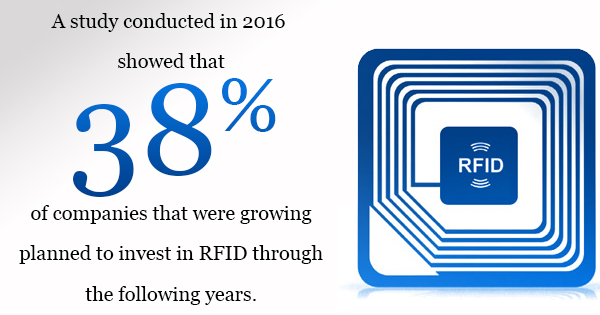RFID: Present, Near Future, and the Internet of Things

Radio-frequency identification, or RFID, allows objects to store significantly more information than previous technologies like barcodes and magstripes. It’s no wonder, then, that in 2016 there was a study conducted by Peerless Research Group showing that 38% of companies that were growing planned to invest in RFID through the following years. Today, RFID card readers are everywhere. The chip in your credit card is an RFID chip, and RFID scanners are able to pick up the unique information that your credit card holds. So, what does the future look like for card technology, and for machine-to-machine communication as a whole?
RFID Contactless Card Readers
Though the technology is already very much here, there has yet to be much adoption for RFID contactless card readers. The idea is, instead of needing to insert your card into a machine, you simply hold it up to a contactless RFID reader, and it scans automatically. This will make everyone’s lives much easier in supermarkets, gas stations, and many department stores. Yet, this is merely an incremental advancement in thing-to-thing communication. For what’s to come, we need to turn to self-driving cars.
The Internet of Things
Using radio frequencies and intelligent data storage on simple everyday objects, we are able to make items communicate with each other. We have been doing this for ages when you think about it. Barcode scanners talk to barcodes, credit card magstripes talk to card readers, and so on, but technology is a bit more advanced these days. The Internet of Things refers to the idea that while we have the internet for long distance human-to-human communication using computers as a medium, we could also have objects communicate with each other without any direct human input.
We already have smart home features like air conditioning that you can control from your phone, but what about machines that can operate based on information that they receive from the real world, something that you cannot control? Self-driving cars are inching their way to reality every day, using sensors and receivers very much based on RFID technology. So, one day a humble theory to improve credit cards, the next an integral component in self-driving cars. Who would have thought such a tiny chip could be such a big deal?
